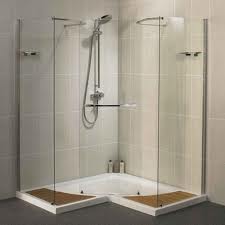This post in the next paragraphs pertaining to How to Install a Shower Enclosure is extremely compelling. Have a go and make your own findings.

An effective shower installment needs cautious planning and a lot of work. In most cases, you will certainly require to do 3 kinds of tasks: framing walls, mounting the plumbing, and also completing walls.
Different Kinds Of Shower Units
Many Common Mistakes
Prep work.
Firstly, you have to select the kind of shower that you wish to mount. It is very important to determine whether the chosen shower is capable of coping with specific systems and also can control a safe degree of water with the boiler. The majority of shower systems nowadays are designed to be adaptable to different water stress (such as kept hot water and also chilly mains).
It is additionally essential to take into consideration the water pressure as well as the planning of the piping and also drain for the shower.
Method.
Depending upon the type of shower you want to set up, the shower head must either be suited order to avoid its contact with the water in the bathroom below or the base tray, or it has to have a check valve.
Prior to beginning, it is advisable to note the positions of the shower head as well as control, and to prepare the pipe-work involved. In addition, the water drainage system to get rid of the waste water will require to be intended. Both positions of the cable television path as well as the shower button will likewise require to be thought about if an immediate or electrical shower system is being installed.
Utilize the instruction guide given with the shower unit to fit the shower control.Before suitable the pipelines that will supply the water to the shower system, it is necessary to cut off the water system. In order to shield the pipes, they ought to be provided a waterproof covering and additionally fitted with separating valves. The pipelines can after that be buried right into the wall as well as smudged over to neaten the overall look.
Fit the base tray, shower head, and also fittings.
Connect the primary shower control to the pipelines that will be supplying the water (This might call for a female screw thread adapter).
Reconnect the water system and also test the pipes for any kind of leakages, as some might require tightening.
If you are setting up an electric shower, remember to switch off the electrical energy supply prior to making any electrical connections. As soon as these links have been made (there should be assistance within the user's manual), the power supply can be switched over back on.
Readjusting Water Pressure to Suit Your Shower.
The cold water tank can be raised to a better elevation (occasionally as little as 150mm (6inches)) by fitting a strong wooden assistance underneath it - potentially composed of struts and blockboards. If you pick this alternative, the major as well as distribution pipes will additionally need to be increased to satisfy the new elevation of the storage tank.
Conversely, a booster pump (a single pump or a dual/twin pump) can be fitted. Whichever type is chosen, it should be linked into the power supply in order to operate.
Piping as well as Drain.
It is best to utilize 15mm diameter supply pipes, as well as make the runs to the shower as short as well as straight as feasible so regarding preserve optimal pressure as well as minimise heat loss. Additionally, by minimising the use of elbows for pipe edges, you can lower the resistance in the circulation of the water. You can attain this by flexing the pipelines instead.
How Do You Install a Shower? Follow This Guide
Installing a Shower at a Glance
Tools & Materials: Level, electric drill, caulk, hole saw, cedar shims, shower unit Step 1: Drill pilot holes Step 2: Prep fixture holes Step 3: Move unit into place Step 4: Caulk corners and base Step 5: Attach door Step 6: Install shower pan Whenever plumbing is involved in a DIY project, people worry about what might go wrong. The truth is that installing a shower isn’t that complicated, and you can save a lot of money by doing it yourself. You shouldn’t need to make any alterations to your plumbing to complete the job, and most of the tools you need will be provided in your new shower kit.
Can I Install a Shower Myself?
Even if you’ve never installed a shower before, you’ll find this to be a project that is perfectly suited for DIYers with a moderate level of experience. Whether you're doing a bathtub conversion or installing a new stall, most of what you need comes in shower kits that you can purchase from a hardware store. The first thing you need to do is determine what type of shower stall you want.
Single-panel stalls are the easiest to install because they come preassembled. All you need to do is put them in place. Multi-panel showers require a few additional steps, but you’ve got more control over the appearance of your unit. Multi-panel units are also much easier to handle if you’re going to do the installation without any help.
Be sure to take all appropriate safety precautions, such as wearing eye protection and gloves. When you’re removing or installing a shower unit, you might kick up debris that could hurt your eyes. You’ll also need to work with equipment that will get extremely hot, so be sure to have safety gloves handy.
Tools and Materials
2- to 4-foot level Electric drill with a 1/8-inch drill bit Caulk 2-inch hole saw Cedar shims The unit itself Before You Begin: Prep the Space
It’s highly important to measure your space accurately before putting the stall in. Measuring from the floor upward and from each corner outward will ensure you’ve got the right measurements. What you’re looking for is where the plumbing apparatuses are going to come through the stall. Transfer these measurements over to the back of your unit by drawing the locations of these holes using a pencil or marker.
Pull out your old shower and make sure to scrape off all the old caulking. Be thorough because you want to work with smooth surfaces for the best installation. Once you’ve pulled out your existing shower, you need to make sure that the floor is clean and dry. The best way to clean debris is with a shop vacuum, as it’ll soak up water and dirt together.
If you’re experiencing any plumbing issues, such as low water pressure, this is a perfect opportunity to solve them. Make sure that the pipes themselves are not in need of patching and clean your showerhead. When you turn the water back on after your project, check the pipes for signs of wear or disrepair. Anything beyond minor repairs should be handled by a plumber, and this is the best time to bring in a professional.
If the floor has any moisture at all, don’t proceed until it’s completely dry. The last thing you need is for the floor to rot or invite mold and mildew into your base. Once everything is dry, apply waterproof wallboard to the walls. This can be attached with screws or nails, then sealed with caulk so that water doesn’t seep into any crevices.

I discovered that post on Simple ways to Install a Shower Cubicle on Your Own when doing a lookup on the web. Sharing is good. Helping others is fun. Thanks so much for taking the time to read it.
Go Deal Now
 Jonathan Taylor Thomas Then & Now!
Jonathan Taylor Thomas Then & Now! Andrea Barber Then & Now!
Andrea Barber Then & Now! Seth Green Then & Now!
Seth Green Then & Now! Barry Watson Then & Now!
Barry Watson Then & Now! Julia Stiles Then & Now!
Julia Stiles Then & Now!